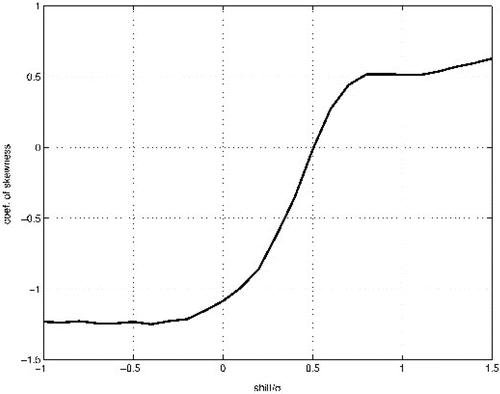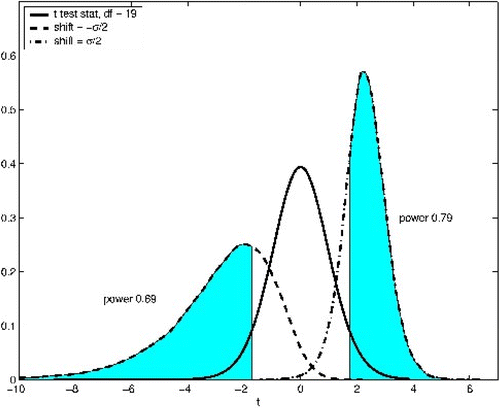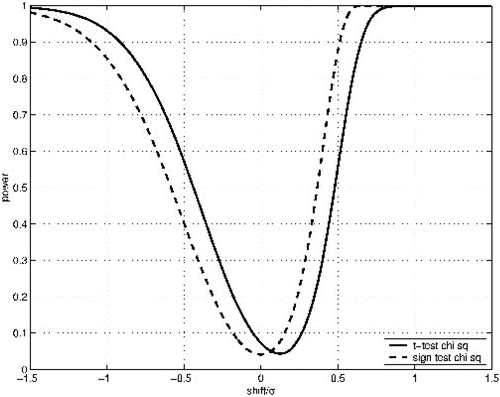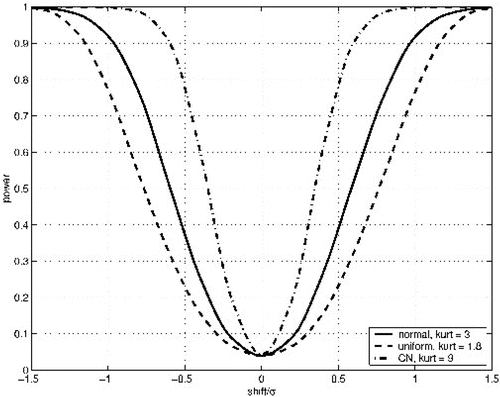Figures & data
Figure 1. The effect of the size and direction of the shift on skewness of the t-statistics when the parent population is for n = 20.

Figure 2. Power of the left- and right-tailed t-tests for shifts of 0.5σ under a
parent population for n=20 and α = 0.05.

Figure 3. The power of the two-tailed t-test is not uniformly higher or lower for the parent than for the normal parent population for n = 20 and α = 0.05.

Table 1. Power of one-tailed t-test for various shifts and sample sizes under normal, , uniform, and contaminated normal (CN) parent populations, α = 0.05.
Table 2. Power of one-tailed t-test for various shifts and sample sizes under normal, , uniform, and contaminated normal (CN) parent populations, α = 0.10.
Figure 4 Power comparison for the two-tailed sign test versus the t-test when the parent population is for n=20 and α=0.0414.

Figure 5 The power of the two-tailed sign test for low-, medium-, and high-kurtosis parent populations when n=20 and α = 0.0414.

Table 3. Power of one-tailed t and sign tests for normal and parent population.
Table 4. Power of one-tailed t and sign tests for low- (uniform), medium- (normal), and high-kurtosis (contaminated normal) parent populations.